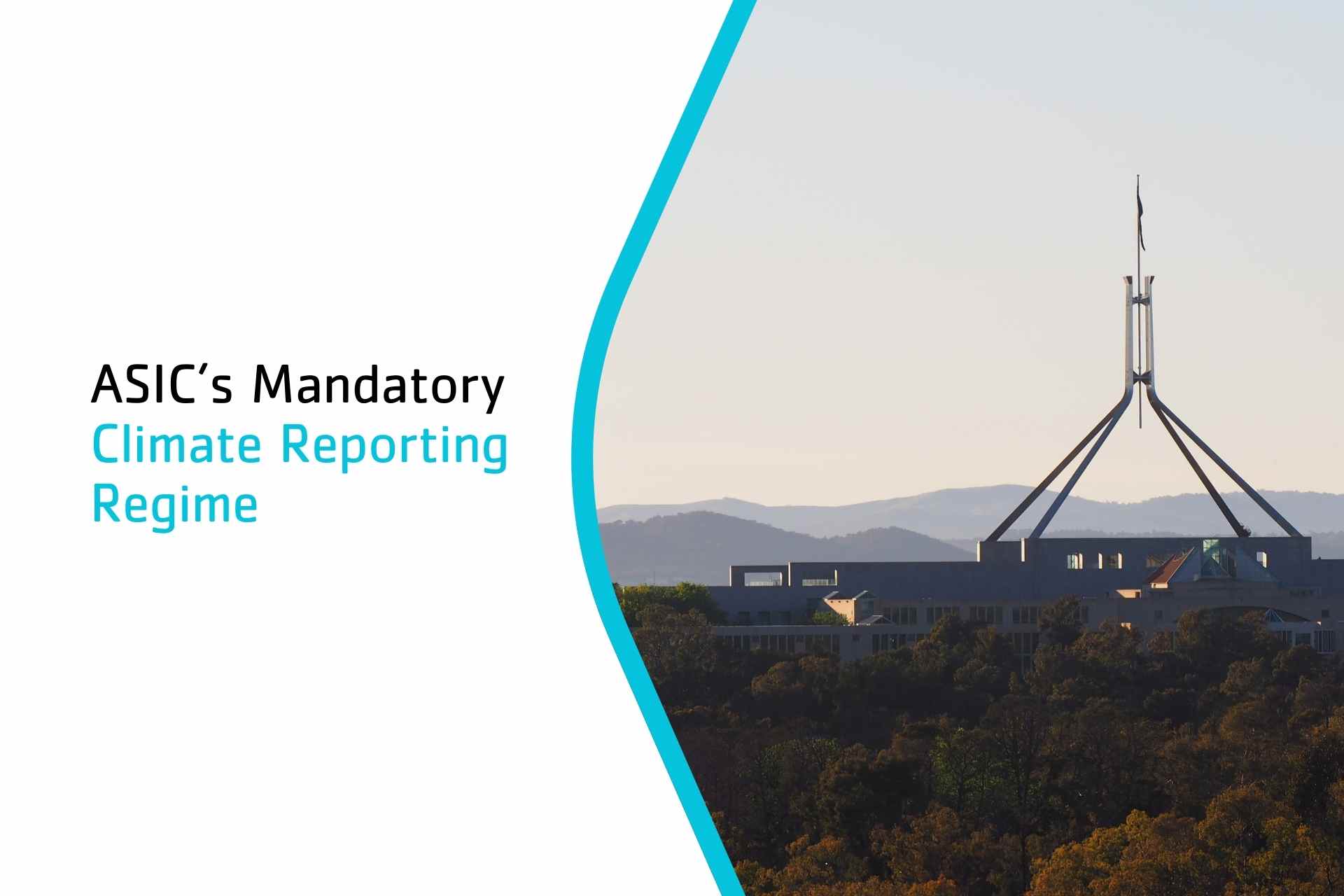As sustainability becomes increasingly critical to business operations, regulators are stepping up to ensure that companies are transparent about their environmental impact. In Australia, the Australian Securities and Investments Commission (ASIC) has announced its focus on sustainability practices and the introduction of a mandatory climate reporting regime, proposed to commence in phases starting from 1 January 2025.
Table of Contents
- 1. The Regulatory Landscape: Understanding ASIC’s New Climate Reporting Requirements
- 2. The Role of CFOs in Navigating Climate Reporting
- 3. Aligning Financial Reporting with Sustainability Goals
- 4. Practical Steps for Businesses: Preparing for Compliance
- 5. Timeline and Phased Implementation
- 6. The Long-Term Benefits of Compliance
- Conclusion
- FAQ
1. The Regulatory Landscape: Understanding ASIC’s New Climate Reporting Requirements
As part of Australia’s commitment to net zero emissions by 2050, the government has introduced legislation that will require over 6,000 entities to report on their climate-related financial disclosures. These entities include listed and unlisted companies, as well as major financial institutions and superannuation entities.
ASIC’s new climate reporting standards are designed to standardise how climate risks are disclosed in financial reporting, aligning Australian businesses with international frameworks such as the Taskforce on Climate-related Financial Disclosures (TCFD). Reporting entities will need to disclose key information about governance, strategy, risk management and metrics, ensuring that climate risks are fully integrated into financial strategies.
2. The Role of CFOs in Navigating Climate Reporting
Chief Financial Officers (CFOs) and finance teams are central to ensuring their organisations meet these new regulatory obligations. Climate reporting isn’t just about compliance; it requires integrating climate risk into broader business strategies. CFOs will need to work closely with sustainability teams to ensure robust data management practices are in place. This collaboration will help businesses translate climate data into meaningful financial metrics that support risk management, long-term growth and investor confidence.
3. Aligning Financial Reporting with Sustainability Goals
The introduction of mandatory climate reporting standards represents a significant shift in reporting and using financial information. Companies will need to align their financial reporting practices with sustainability goals, ensuring that they accurately reflect the financial implications of climate-related risks. This alignment is not only about compliance but also about enhancing investor confidence and ensuring that companies remain competitive in a market where sustainability is increasingly valued.
4. Practical Steps for Businesses: Preparing for Compliance
With the mandatory climate reporting regime on the horizon, businesses need to start preparing now.
Key steps include:
- Assessing Current Capabilities: Evaluate existing reporting systems to identify gaps in data collection, governance and reporting that need to be addressed.
- Engaging Stakeholders: Work with internal and external stakeholders to ensure that everyone understands the new requirements and their implications for the business.
- Implementing Robust Data Management Systems: Invest in technology and systems that can handle the increased data requirements associated with climate reporting.
- Developing a Governance Framework: Establish a governance structure that ensures accountability and oversight of climate-related disclosures.
- Training and Capacity Building: Provide training to financial and sustainability teams to ensure they have the skills needed to meet the new reporting standards.
5. Timeline and Phased Implementation
ASIC’s reporting regime will be implemented in phases:
- Group 1: From 1 January 2025, companies must comply if they meet at least two of the following criteria: over 500 employees, AU$1 billion in consolidated gross assets, or AU$500 million in consolidated revenue. This also includes entities required to be registered under the NGER Act that meet the publication threshold.
- Group 2: Starting 1 July 2026, companies will need to comply if they meet at least two of these thresholds: over 250 employees, AU$500 million in consolidated gross assets, or AU$200 million in consolidated revenue. This group also covers additional NGER reporters and asset owners with AU$5 billion or more in assets under management.
- Group 3: From 1 July 2027, compliance is required for companies meeting at least two of the following criteria: over 100 employees, AU$25 million in consolidated gross assets, or AU$50 million in consolidated revenue.
6. The Long-Term Benefits of Compliance
While the new reporting requirements may seem daunting, they also offer significant long-term benefits. By enhancing transparency and accountability, companies can build trust with investors and other stakeholders. Furthermore, a strong focus on sustainability can lead to improved risk management, better financial performance and a competitive advantage in a market that increasingly values sustainability.
Conclusion
ASIC’s upcoming mandatory climate reporting regime marks a significant shift in the Australian regulatory landscape. For businesses across various sectors, the key to navigating these changes lies in early preparation, robust data management and a clear alignment between financial reporting and sustainability goals. By taking these steps now, businesses can not only ensure compliance but also position themselves for long-term success in an increasingly sustainability-focused world.
Need help preparing for ASIC’s upcoming mandatory climate reporting? Contact us for expert guidance on staying ahead of the new requirements.
Frequently Asked Questions
ASIC’s mandatory climate reporting regime is a new regulatory framework requiring businesses to disclose how climate-related risks and opportunities impact their financial performance and operations. This aims to enhance transparency and align Australia with global sustainability efforts.
The first phase of the regime starts on 1 January 2025 for Group 1 entities. The regime will then be extended to smaller entities in phases, with full implementation expected by 1 July 2027.
The mandatory reporting regime will apply to companies in phases, based on their size. The key criteria for inclusion are annual revenue, total assets, and number of employees. Larger companies will be required to report first, starting in 2025, with smaller entities phased in over subsequent years.
Companies must disclose governance, strategy, risk management, and metrics related to climate risks and opportunities. This will include reporting on greenhouse gas emissions, risk assessments and targets aligned with sustainability goals.
To collect the right data for climate reporting, companies should assess their current data management systems and identify any gaps in data collection. It may be necessary to invest in new technology or systems that can handle the increased data requirements. Additionally, companies should work closely with sustainability teams to ensure that all relevant data is captured and reported accurately.
Non-compliance with the new reporting requirements could result in regulatory penalties, reputational damage and a loss of investor confidence. It is essential for companies to take these requirements seriously and ensure they are fully prepared to meet them.
While the regime will initially focus on larger companies, smaller businesses may be impacted indirectly, especially if they are part of supply chains for larger companies. These businesses should consider aligning their practices with the new requirements to remain competitive and meet expectations from partners.
Investors are increasingly demanding transparency and accountability when it comes to climate-related risks and opportunities. By adopting robust climate reporting practices, companies can enhance investor confidence and attract investment from those who prioritise sustainability. This can lead to a more stable and resilient business in the long term.
Companies should communicate their climate reporting efforts through regular updates in their financial reports, sustainability reports and other communication channels. Transparency is key, so businesses should ensure that their disclosures are clear, comprehensive and accessible to all stakeholders, including investors, customers, employees and regulators.






















